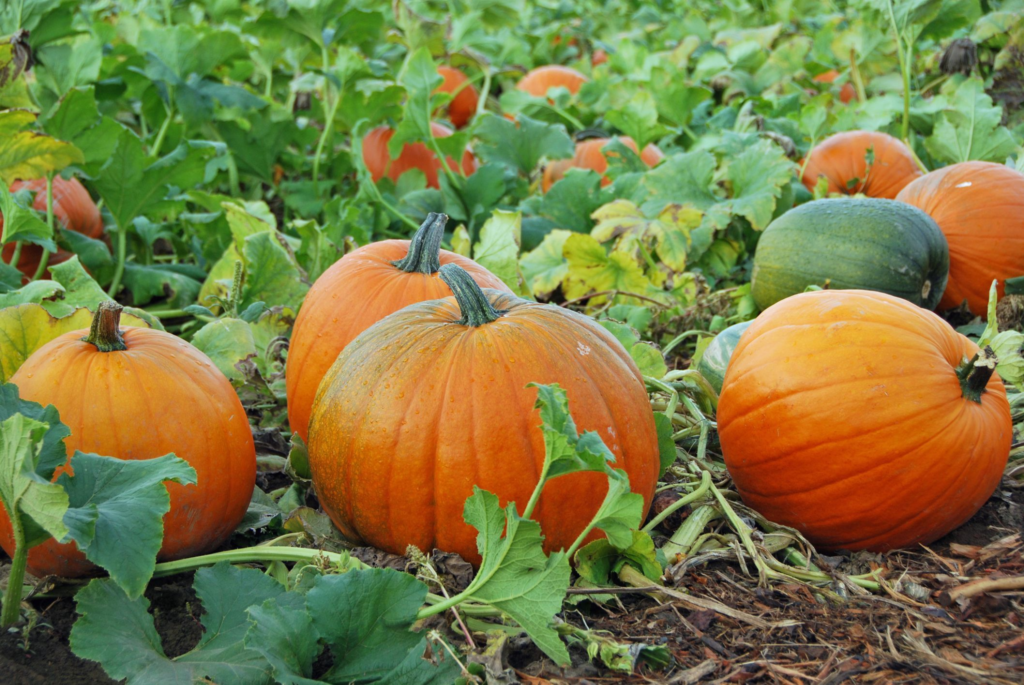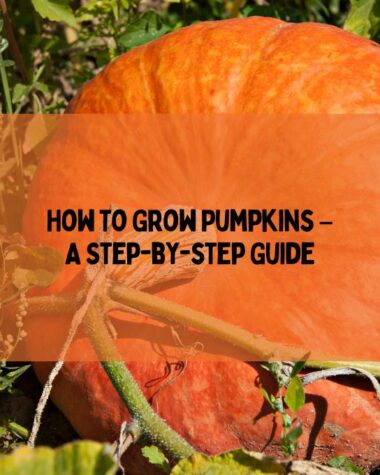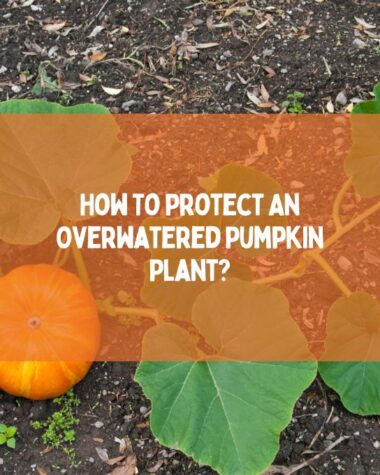Pumpkins are a delightful fall decoration and a tasty addition to many recipes. If you’ve ever considered growing your own pumpkins, you might be wondering, “How much space do pumpkins need to grow?”
In this article, we will delve into the world of pumpkin cultivation, discussing the ideal space requirements, soil conditions, and sunlight exposure needed for these vibrant orange fruits to flourish.
Let’s explore the secrets to growing healthy and robust pumpkins!
The Importance of Adequate Space for Pumpkin Growth

Pumpkins are vigorous plants that require ample space to spread their sprawling vines and produce large, healthy fruits.
Giving your pumpkins enough space ensures proper air circulation, reduces the risk of disease, and promotes optimal growth. Insufficient space can lead to overcrowding, competition for nutrients, and stunted fruit development.
So, let’s find out exactly How much space do pumpkins need to grow!
Related Reading
- Maximizing Your Harvest With the Best Fertilizer For Pumpkins
- How to Grow Pumpkins in Pots?
- A Complete Guide On Grow Pumpkin Indoors
- How To Grow Pumpkins in Raised Beds?
How Much Space Do Pumpkins Need?
To give pumpkins adequate room for growth, you should provide each plant with a minimum of 50–100 square feet of space. This generous allowance accommodates the sprawling nature of pumpkin vines and allows for ample airflow between the plants.
By providing enough space, you’ll minimize the risk of diseases like powdery mildew and encourage robust fruit development.
Important Pumpkin Plant Spacing Guidelines

When it comes to spacing your pumpkin plants, it’s important to consider both the distance between individual plants and the spacing between rows.
Here are some general guidelines about How much space do pumpkins need to grow to help you plan your pumpkin patch:
Give Space Between Plants
Allow a minimum of 6–8 feet between each pumpkin plant to provide enough room for the vines to spread. This spacing also facilitates efficient pollination, as it allows bees and other pollinators to navigate between the plants easily.
Leave Space Between Rows
Leave a gap of approximately 8–12 feet between rows to ensure ample space for the vines to grow outward. This distance facilitates easy access for maintenance tasks like weeding, watering, and harvesting.
Provide Vertical Space
Keep in mind that pumpkin vines tend to grow in a trailing fashion. If you have limited space, you can train the vines to grow vertically using a trellis or sturdy support structure. This vertical approach allows you to save space while still cultivating pumpkins successfully.
How does proper spacing affect pumpkin yield?
Proper spacing plays a significant role in determining the yield of pumpkins.
- When pumpkins are given adequate space to grow, each plant can fully develop and produce larger, healthier fruits.
- Ample spacing allows for proper airflow, reducing the risk of diseases and pests that can hamper growth.
- It also ensures that each plant receives sufficient sunlight, which is essential for photosynthesis and fruit development.
- Proper spacing facilitates efficient pollination, as it allows pollinators like bees to move between plants easily, resulting in a higher fruit set.
By providing the right amount of space, you create an environment that promotes optimal pumpkin growth and ultimately leads to a more abundant harvest.
How can I prevent overcrowding in my pumpkin patch?

Preventing overcrowding in your pumpkin patch requires careful planning and maintenance.
Here are some tips to help you avoid overcrowding:
- Proper Spacing: Follow the recommended spacing guidelines for pumpkin plants, allowing enough distance between each plant to accommodate their sprawling vines.
- Regular Monitoring: Keep a close eye on the growth of your pumpkins. If you notice overcrowding, selectively prune back excess vines to maintain optimal spacing.
- Weed Control: Regularly weed your pumpkin patch to eliminate competing plants that can contribute to overcrowding.
- Vertical Gardening: Consider training your pumpkin vines to grow vertically using trellises or supports. This method saves horizontal space and prevents excessive spreading.
- Thinning Out: If overcrowding becomes severe, you may need to remove some plants to create more space for the remaining ones to thrive.
By implementing these preventive measures, you can ensure that your pumpkin patch remains spacious and provides an ideal environment for healthy growth and bountiful harvests.
Conclusion
When it comes to growing pumpkins, providing adequate space is crucial for the plants to thrive and produce healthy fruits. Aim to provide each pumpkin plant with a generous 50–100 square feet of space to accommodate their sprawling vines and ensure proper airflow.
Remember to space the plants and rows accordingly, considering the growth habits of the pumpkin vines. By giving your pumpkins the space they need, you’ll create an environment conducive to successful growth and a bountiful harvest.
Related Reading
- Little Finger Eggplant: Growing Tips, Care, and Recipes
- Harvesting Courgettes: Storing And Preserving
- Cucumber Face Masks: Your Ticket to Fresh and Revitalized Skin
- Difference Between Red Carrots and Orange Carrots
Frequently Asked Questions (FAQs)
Can I plant pumpkins close together to save space?
While it may be tempting to plant pumpkins closer together to maximize space, overcrowding can lead to several issues.
Insufficient airflow increases the risk of diseases, and competition for nutrients can result in smaller and less healthy fruits. It’s best to provide each pumpkin plant with adequate space for optimal growth.
Can I grow pumpkins in containers with limited space?
While it’s possible to grow pumpkins in containers, it’s essential to choose varieties suitable for compact growing conditions. Look for dwarf or bush varieties that are specifically bred for container cultivation.
Remember to provide ample container size to accommodate the plant’s root system and provide trellises or supports for the vines to grow vertically.
Are there any alternative methods for growing pumpkins in limited space?
Yes, if you have limited space, you can explore alternative growing methods such as vertical gardening or raised beds.
Vertical gardening involves training the vines to grow upward by utilizing trellises or other vertical supports. Raised beds offer improved soil drainage and can help contain the pumpkin plants in a defined space.







